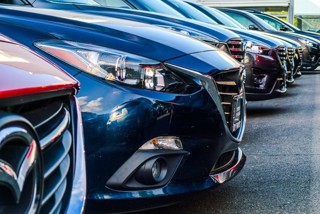By Richard Yarrow
Rumours had been circulating and vultures had been circling.
It’s all over for Trader Media Group’s portfolio of magazines, including the iconic Auto Trader.
The title, plus Top Marques, Truck & Plant, Van Trader and Farm Trader, will all continue, but only in an electronic format.
There will be no more paper publications. The move is the final chapter in TMG’s strategy to migrate all its activities to digital platforms. The reason is obvious and won’t come as a surprise to anyone.
The internet is where motorists and dealers are going to access information, to buy and sell vehicles.
Use of TMG’s digital platforms has grown massively, with ‘desktop’ up 13%, ‘mobile’ up 67% and ‘tablet’ up a whopping 130% year-on-year.
The website www.autotrader.co.uk receives more than 11 million unique visitors each month, and more than three-and-a-half million people access the mobile site.
By contrast, circulation of the print edition has declined from a peak of 368,000 copies in January 2000 to just 27,000 in March 2013.
The magazine started life as Thames Valley Trader in 1977, selling everything from cars and houses to boats.
It was quickly rebranded and repurposed as Auto Trader. The seeds of its demise were sown in 1996 – though no one knew at the time – when it went online. The June 28, 2013, issue will be the last.
The other titles will cease at the same time.
Zillah Byng Maddick, Trader Media Group’s interim CEO, said they had all played a key role in the business for 36 years, but the time had come to move on.
“With a marked shift by consumers and dealers to online platforms, we continue to innovate to ensure that we offer them the products and services they require through their channels of choice.”
Car dealer and TV personality Mike Brewer called it “a sad day”, saying he’d built his early career on Auto Trader magazine.
“I used to get up every Thursday and rush to the newsagents to get my copy.
"To think it’s not going to be there anymore is strange, but I completely understand the decision.
"We can have all the information about a car on our phones now.”
It’s a view echoed by today’s franchised dealers. The bottom line is they want customers to view their stock, new and used, but it’s irrelevant which media they choose to do that on.
John Caney is managing director of Hyundai North London, part of Endeavour Motor Group.
He said: “Do people still come in the showroom with the local edition of Auto Trader folded back to the page with my car on?
"I haven’t seen that for a long, long time. But what we do see is buyers coming in with mobile phones and iPads.
"That’s far more relevant today and says it all about why Auto Trader magazine is closing.”
With recent news from the United Nations that worldwide mobile subscriptions are expected to pass the ‘more than one per person’ barrier earlier next year, it’s a trend that is only going to continue.
Caney added: “As retailers, it’s about having live information, allowing people to scroll through and see different elements.
"The magazine as a format is out of date.”
James Tew is a director at dealer technology specialist iVendi.
He said he’d followed Auto Trader’s journey from 100% print to 100% digital closely.
He agreed the decision to close the magazine was inevitable because it was out of date before it hit the shelves, adding: “It’s like when a big news story breaks – you go online to get the latest on it.”
Tew also felt this could be the tip of the iceberg and not just with the consumer press.
He predicted it was possible the physical versions of CAP Black Book and Glass’s Guide could soon go the same way.
“There will always be someone who will want print if you give them the choice, but with digital devices now so cheap, you’ve got to question the viability of print for anything with prices or data in it.”
Vik Barodia, director of product and marketing at Glass’s UK, said the company had toyed with such an idea – he called it a ‘forced migration’ – but after listening to customers had decided against it.
That said, Glass’s has seen a dramatic uptake in its digital products. Close to 50% of its customers now use them, yet it was less than 20% five years ago.
“There’s a big sector of the market that’s wedded to the Guide.
"These people are independent traders, have been around for a long time and for them it’s as quick to use the Guide as go online.
"We are seeing customers who run both , so the Guide lives in their glovebox and goes to the auction with them.
"We have no plans to cease publishing the Guide in the short term.”
It’s a similar story about those who still use the Black Book.
Mike Hind, CAP’s communications manager, called them “a hard core of traditional customers for whom a non-dynamic and relatively inflexible product is still sufficient”.
Crucially, he said, he believed it would suitable for them “for a few more years”, but that digital now accounted for 94% of CAP’s business.
“It doesn’t feel like the right time to remove that traditional format which still serves some loyal customers so well.
"We have no plans to cease printing, but as they continue to migrate to our digital products that is always under review.”


















Login to comment
Comments
No comments have been made yet.